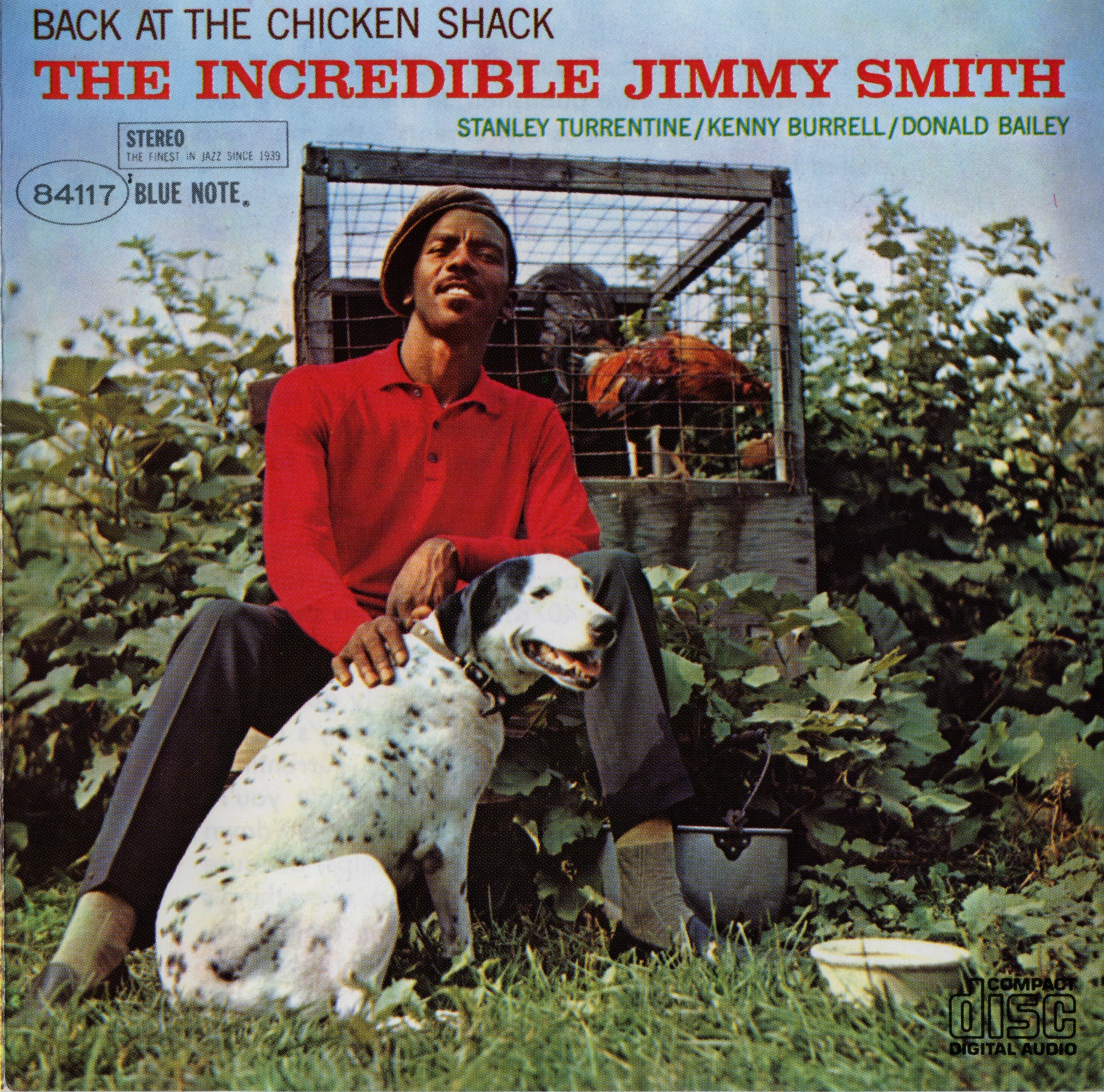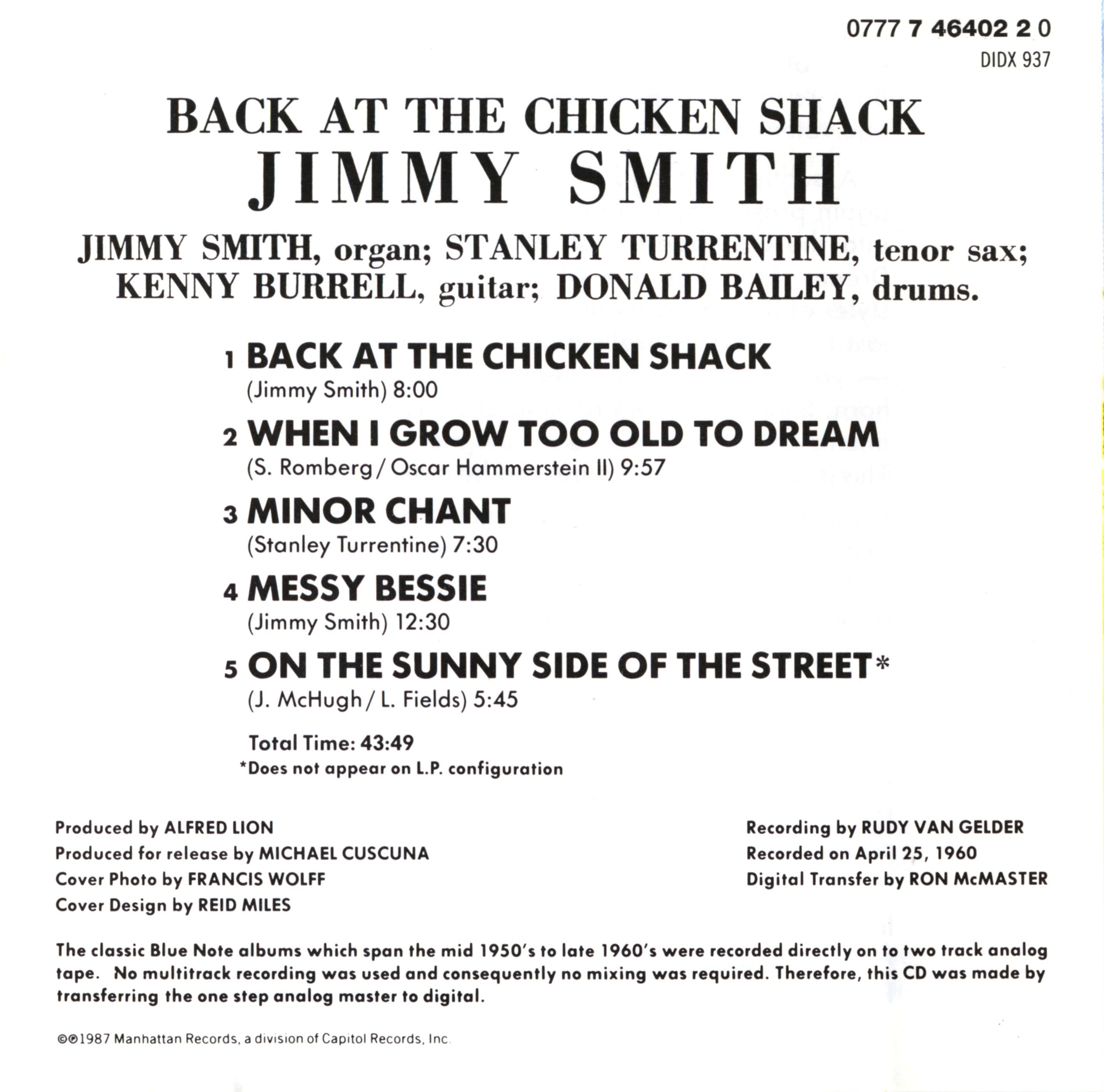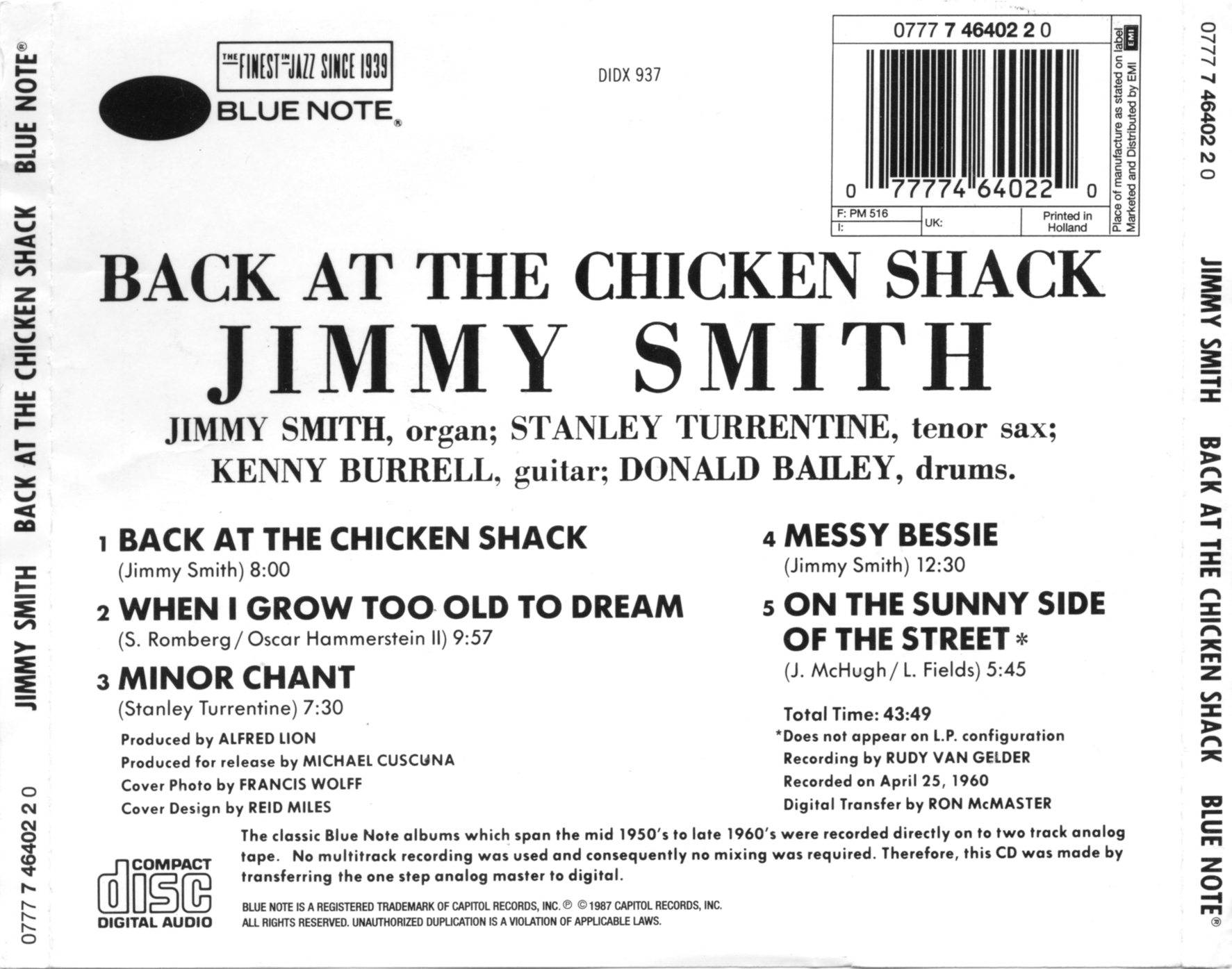


review by Al Campbell
Back at the Chicken Shack is one of organist Jimmy Smith’s classic Blue Note sessions, and the first to draw attention to tenor saxophonist Stanley Turrentine. Recorded in 1960 with Kenny Burrell on guitar, Donald Bailey on drums, and Turrentine, the group reaches the peak of funky soul-jazz that all other challengers of the genre would have to live up to. Included on this uptempo session is a reworking of “When I Grow Too Old to Dream” (a feature for Turrentine), Turrentine’s “Minor Chant,” two Smith compositions, “Messy Bessie” as well as the set’s notable title cut, and the CD-only bonus track, “On the Sunny Side of the Street.” Smith’s Midnight Special album was recorded at these same sessions, and is also exceptional.
1001 Albums You Must Hear Before You Die
0028 – Jimmi Smith – Back At The Chicken Shack – 1960
Label: Blue Note
Producer: Alfred Lion
Art Direction: Reid Miles
Nationality: USA
Redolent of church pews and skating rinks, the organ was once relegated to hip-free zones, a square cousin to the autoharp and accordion. And then along came Jimmi Smith, who turned his attention to the instrument in 1954 just as the Hammond company was unveiling its relatively compact new B3 model.
Smith transformed the organ’s lamentable image with his soulful synthesis of bebop, blues, and gospel, creating a powerfuly grooving new sound. He spawned a new style of music – soul jazz – and a host of disibles who took up the Hammond B3 and formed combos. “Back At The Chicken Shack” is arguably Smith’s greatest album, relentlessly grooving, harmonically sophisticated, and earthly as the Delta mud. Recorded on April 25, 1960, it put saxophonist Stanley Turrentine on the map, but the contributions of the elegantly economical guitarist Kenny Burrell and irresistibly funky drummer Donald Bailey are just as crucial.
Whether distilling a hoary standard such as “When I Grow Too Old To Dream” down to its essential notes or surging through “Minor Chant,” the quartet sounds ready for a rumble. Almost as arresting as the music ist the album’s cover. Instead of Reid Miles’ typically moody Blue Note character studies set in his trademark uncluttered esthetic, “Back At The Chicken Shack” features a playful shot of Smith in a bright red Shirt, seated in front of said shack with a hound dog at his feet. (AG)
Frnher war die Orgel die langweilige Cousine des Akkordeons, ein Instrument fnr Kirchenlieder. Doch dann kam Jimmy Smith und schnekte ihr seine Aufmerksamkeit, gerade als die Firma Hammond 1954 das Kompaktmodell B3 herausbrachte.
Mit seiner Synthese aus Bebop, Blues und Gospel verwandelte Smith das Image der Orgel und schuf einen durchschlagend neuen Sound: den Soul Jazz. In knrzester Zeit gab es eine Vielzahl von Nachahmern, die mit der Hammond B3 ihre Combos starteten. “Back At The Chicken Shack” ist wohl sein bestes Album – ein unerbittlicher Groove, harmonische Eleganz und so erdig wie der Schlamm im Mississippidelta. Am 25.4.1960 wurde die LP eingespielt. Saxophonist Stanley Turrentine trat hier ins Rampenlicht, aber die elegant-sparsame Gitarre Kenny Burrells und das unwiderstehliche Schlagzeug Donald Baileys waren ebenso bedeutend.
Ob Smith nun ergraute Standards wie “When I Grow Too Old To Dream” auf die wichtigsten Noten reduziert oder durch “Minor Chant” stnrmt – seine Musik ist ein Erlebnis. Fast so faszinierend ist das Cover. Statt der dnsteren minimal Ssthetischen Charakterstudien, die sonst fnr Reid Miles und Blue Note Typisch waren, schmnckt ein spielerisches Photo von Smith das Cover von “Back At The Chicken Shack”, auf dem er im knallroten Hemd mit einem Jagdhund zu Fn¯en vor dem besagten Hnhnerstall sitzt. (AG)
Jimmy Smith – organ
Kenny Burrell – guitar
Stanley Turrentine – tenor saxophone
Donald Bailey – drums
Rec: April 25, 1960
